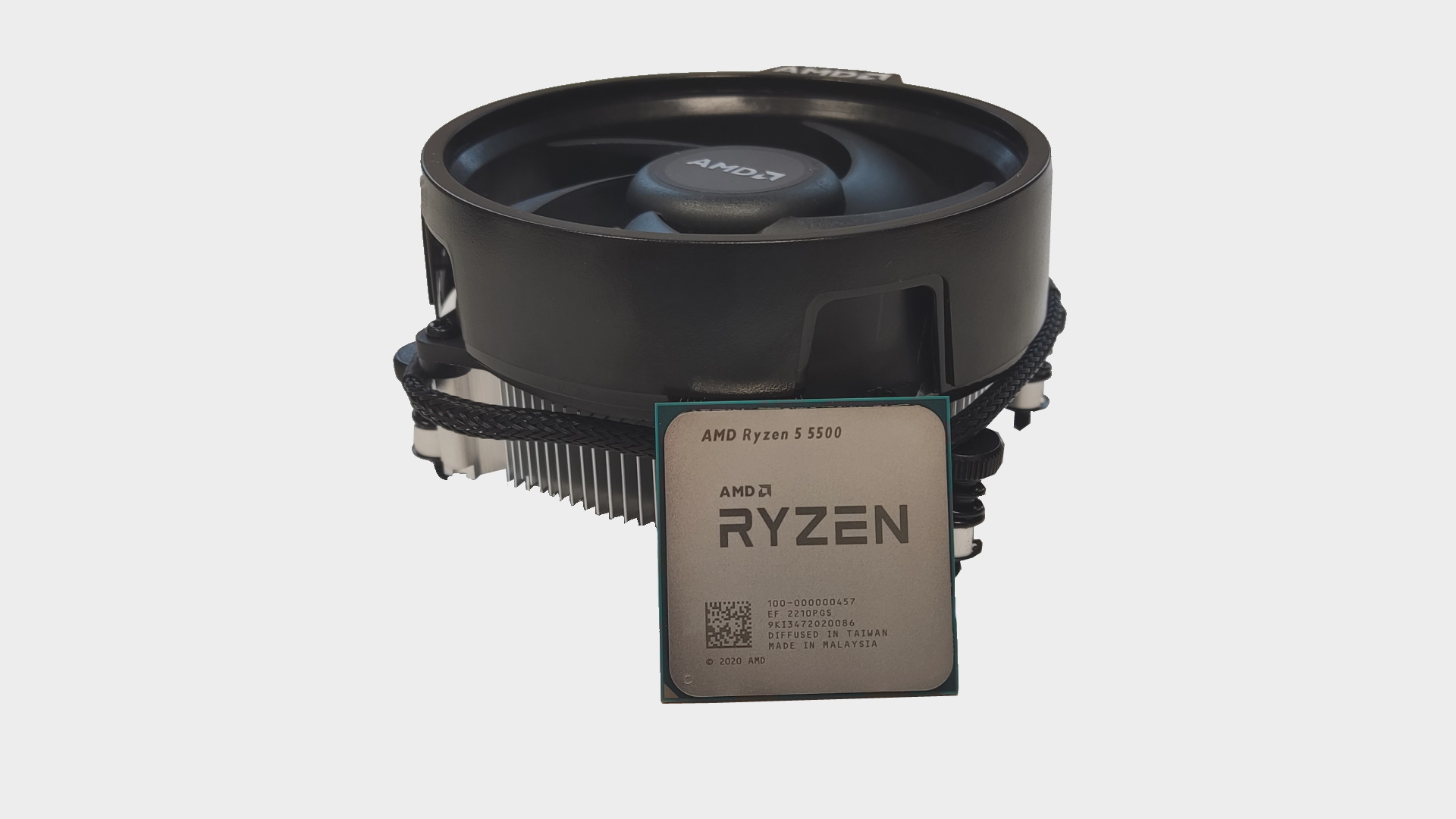Our Verdict
The raw compute performance is impressive for such an affordable chip, but too much has been cut from the overall package to make it a tempting option for gamers.
For
- Tempting price point
- Six-core, 12-thread configuration
- Includes Wraith Stealth cooler
- Decent raw performance…
Against
- …but not in games
- Half the L3 cache of its peers
- Supports PCIe 3.0 only
PC Gamer's got your back
AMD released the Ryzen 5 5500, its cheapest CPU of this generation, nearly a year and a half after the first Zen 3 chips graced our PCs. Seeing as we've got Zen 4 chips due before the year's out, can this chip make an impact in such a tight time frame? And what has AMD had to do to hit its official $159 price tag?
The second question is much easier to answer than the first because we know exactly what the Ryzen 5 5500 does and does not have compared to its peers. Like the Ryzen 5 5600X before it, this chip is a 6-core, 12-thread Zen 3 CPU, offering decent clock speeds and support for DDR4.
What it doesn't offer, though, is support for the latest PCIe 4.0 interface, being stuck as it is with PCIe 3.0, instantly making it a less enticing chip if you're looking for a vaguely future-proofed purchase. It does come with the Wraith Stealth cooler though, which at least means you don't have to buy an after-market cooler to get your system up and running.
As you'd expect from a budget CPU, this has a slower clock speed than what has gone before, although not by as much as you might think. You're looking at a 3.6GHz base clock, with a boost of 4.2GHz, while the previous most-affordable chip, the Ryzen 5 5600X, has a 3.7GHz base clock and can hit turbo up to 4.6GHz.
The difference with this CPU isn't just a slightly slower clock speed though, the Ryzen 5 5500 has just half the amount of L3 cache as the 5600 and the 5600X. And as we have seen from the release of the cache-rich Ryzen 7 5800X3D, plenty of games love a big ol' slice of cache to kick things around in. Not every game, to be fair, but enough to sew the seeds of doubt.
While the lower frequency on its own wouldn't be a major upset, the lower cache as well makes for a slightly less appealing proposition. Factor in that shift to PCIe 3.0, making this less of a long-term play, and the Ryzen 5 5500 needs to deliver in the gaming benchmarks to make it worth considering.
The Ryzen 5 5500 is something of a mixed bag when it comes to performance. Intensive CPU tests see it surprisingly well-equipped given its budget pricing.
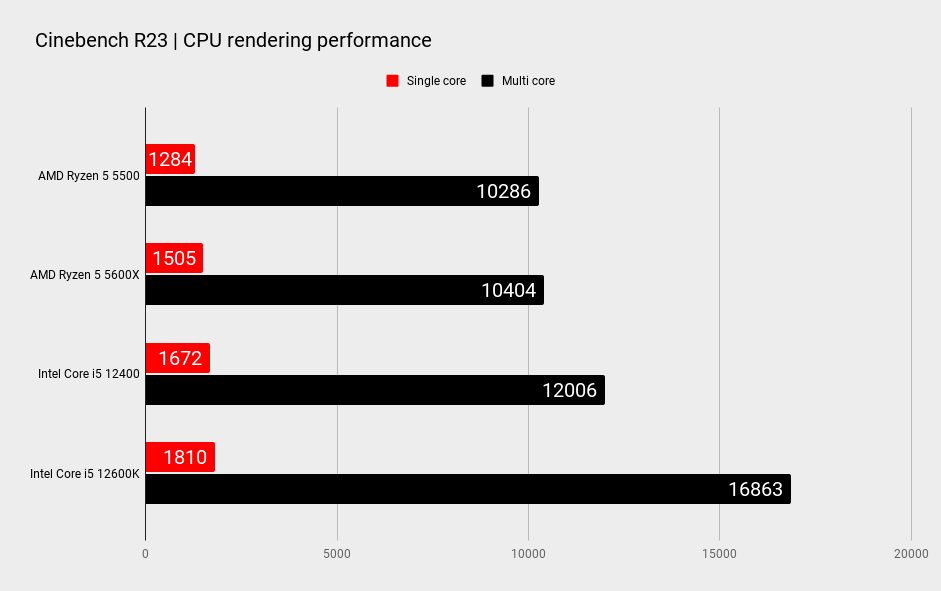
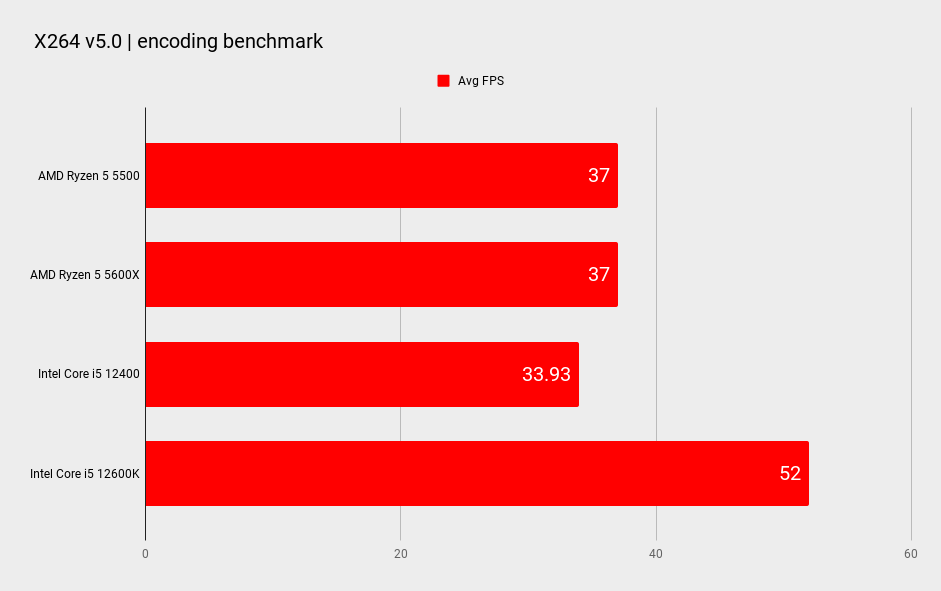
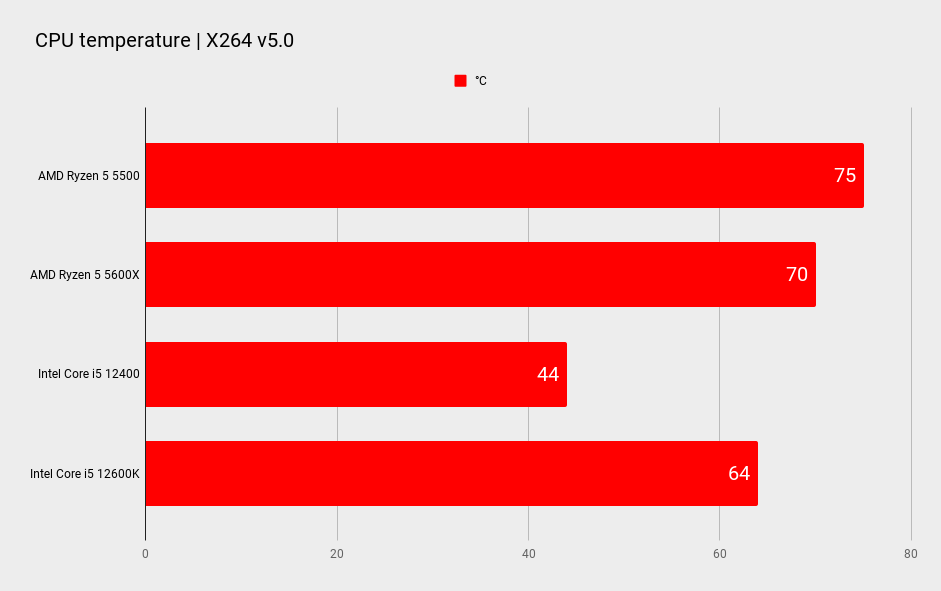
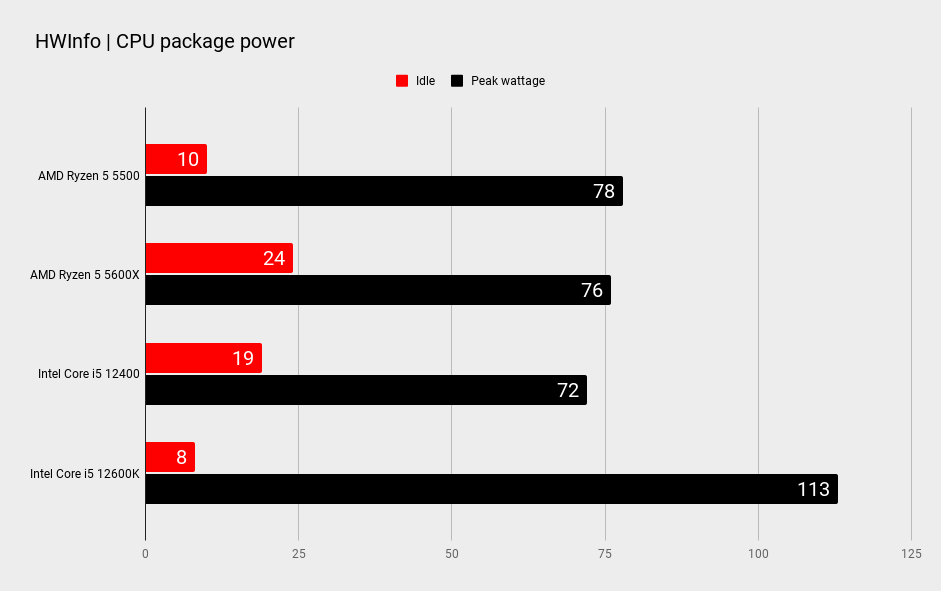
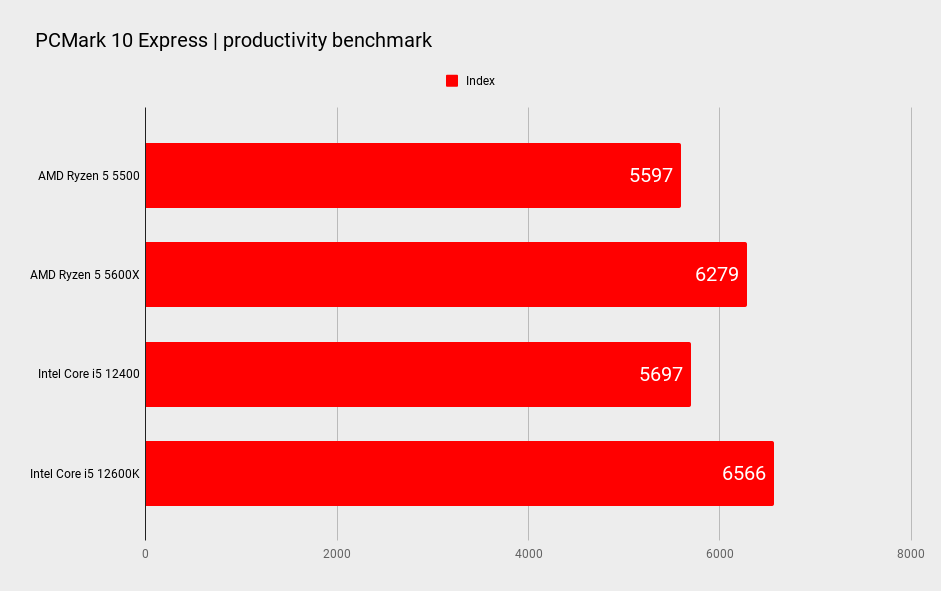
Cooler: Zadak Spark AIO
Motherboard: Gigabyte X570 Aorus Master
RAM: 16GB Thermaltake DDR4 @3,600MHz
GPU: Nvidia GeForce RTX 3080
Storage: 1TB Sabrent Rocket 4 Plus
PSU: Ikonik Vulcan 1200W
By way of example, the Cinebench R23 benchmark result is neck and neck with the Ryzen 5 5600X in the multi-core test, and it isn't far off in the single-core tests either. This feat was duplicated in the X264 v5 benchmark as well, which saw the Ryzen 5 5500 encoding video at 37fps—the same rate as the more expensive chip.
This performance does come at a cost though, and in testing the Ryzen 5 5500 pulled slightly more juice than the 5600X, peaking at 78W as opposed to 76W. It also ran slightly hotter too, at 75°C as opposed to 70°C using the same AIO cooler. The final benchmark of note on this more serious side of things is PCMark 10 Express, which saw the 5500 lag behind the 5600X by 12%. That difference was a sign of things to come in the gaming benchmarks as well…
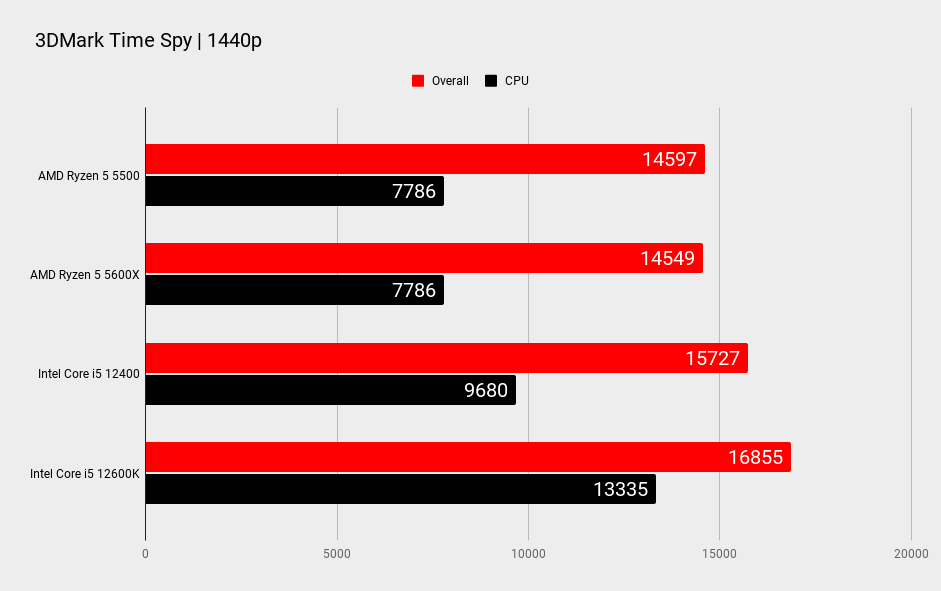
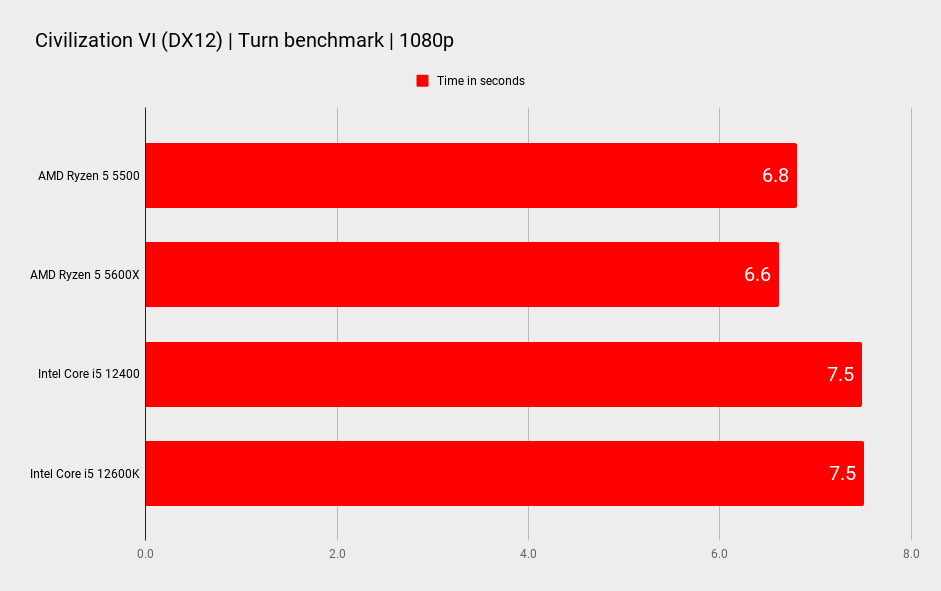
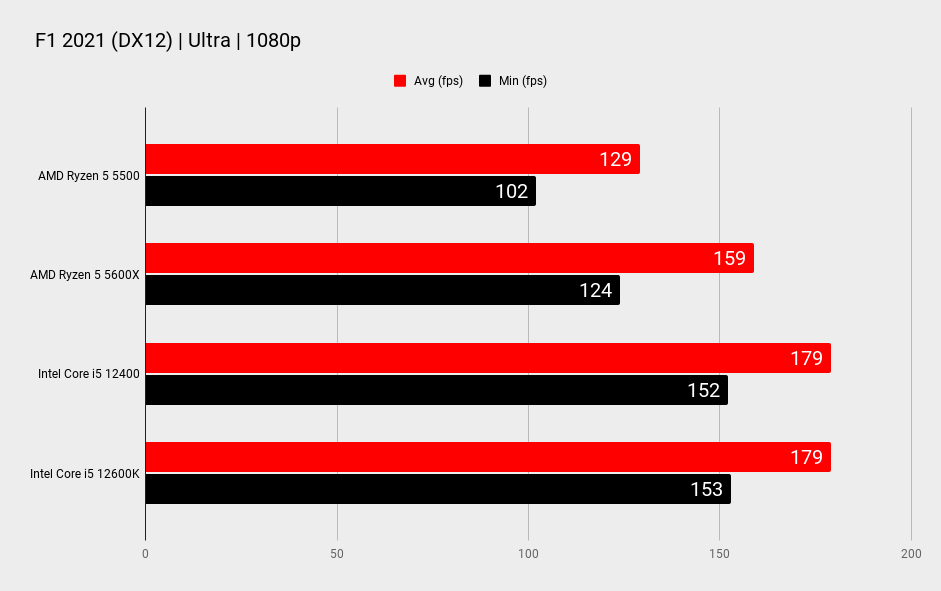

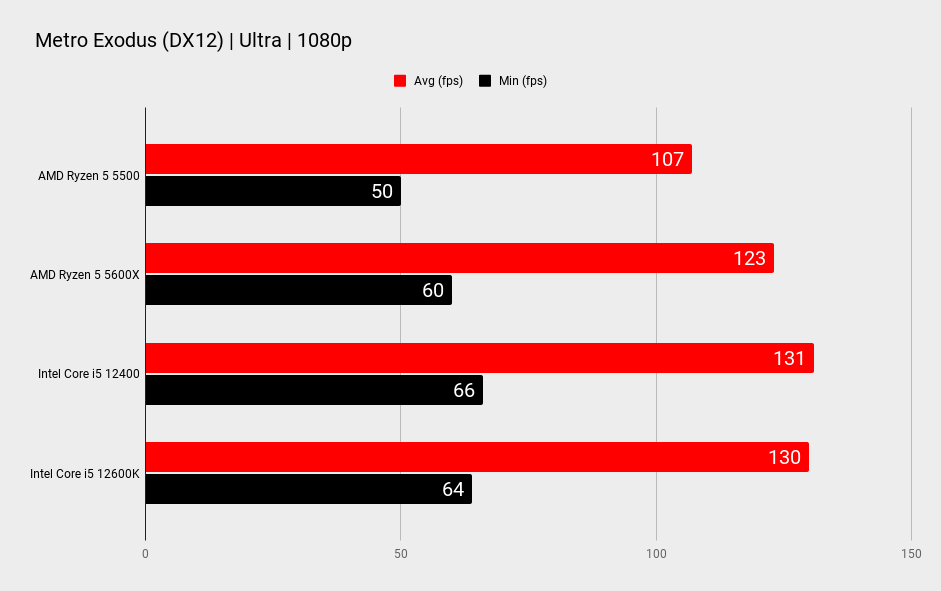


Essentially, this isn't the budget gaming processor you've been waiting for.
AMD's recently released Ryzen 7 5800X3D proved that some games benefit from more cache. The Ryzen 5 5500 meanwhile goes in the opposite direction, with AMD cutting the L3 Cache from 32MB down to 16MB in order to hit the cheaper price point. This results in games not having as much room to play with, and that has a clear impact on performance.
That impact depends on the game, but the general theme is that performance is down significantly in every game we've tested. Far Cry 6 saw the biggest drop against the 5600X, managing just 102fps on average compared to 122fps for the 5600X. F1 2021, Metro Exodus, and Total War: Three Kingdoms were all slower, with the average and minimum frame rates all dropping between 15–20% and making for a less impressive experience.
Essentially, this isn't the budget gaming processor you've been waiting for.
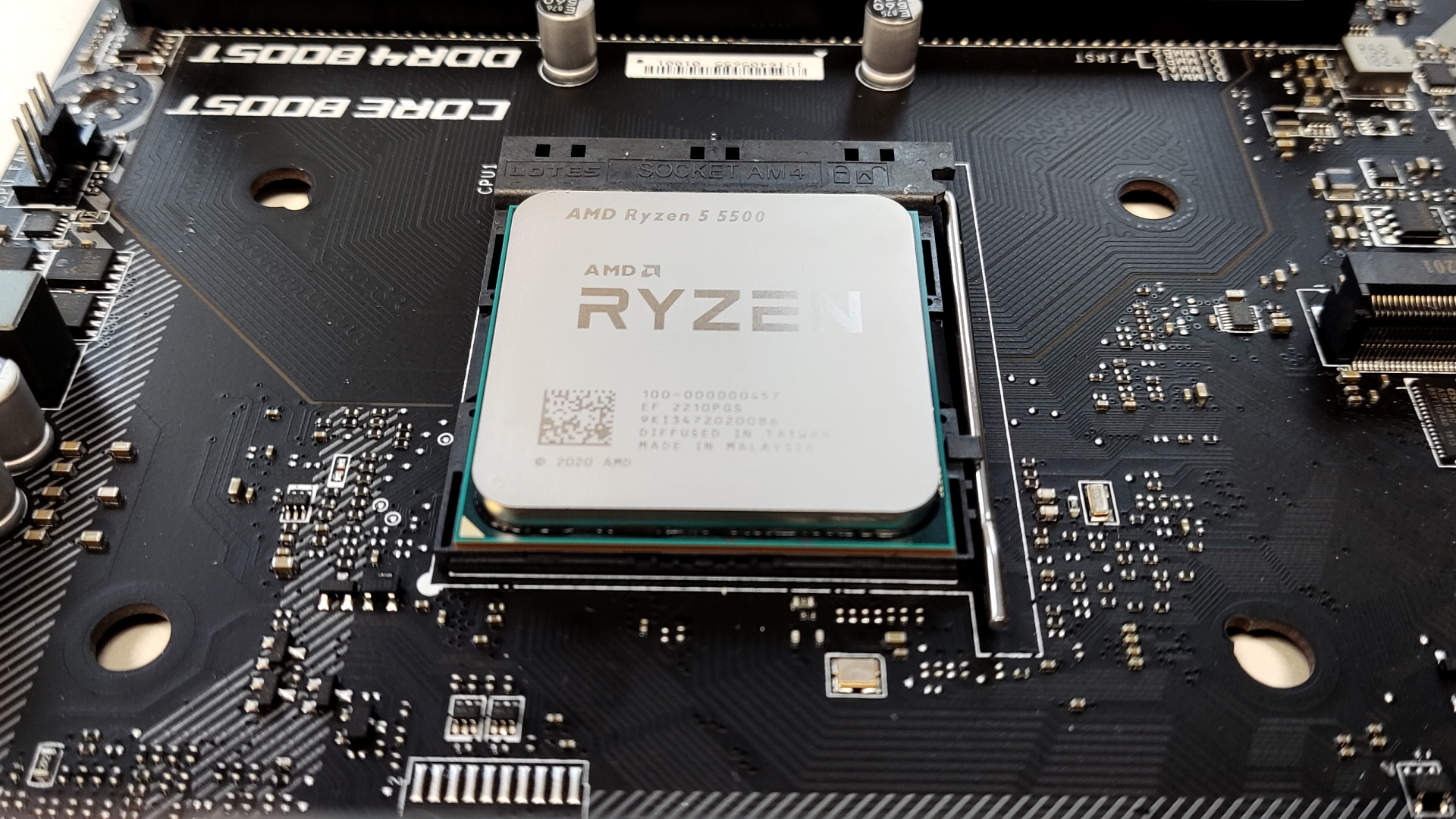
If there is some good news here, it's that the price of this chip has dropped since it was originally launched and can now be had for as little as $139 over at Newegg. That's still not cheap enough to make this an easy recommendation though. Even for gamers on a tight budget.
If you can't stretch to the $199 Ryzen 5 5600X or the Ryzen 5 5600 for $173, then you're left either weighing up bargain last-gen chips or Intel's Alder Lake Core i3, which can be had for around $100 and is a far more tantalising budget option for me.
The raw compute performance is impressive for such an affordable chip, but too much has been cut from the overall package to make it a tempting option for gamers.
Alan has been writing about PC tech since before 3D graphics cards existed, and still vividly recalls having to fight with MS-DOS just to get games to load. He fondly remembers the killer combo of a Matrox Millenium and 3dfx Voodoo, and seeing Lara Croft in 3D for the first time. He's very glad hardware has advanced as much as it has though, and is particularly happy when putting the latest M.2 NVMe SSDs, AMD processors, and laptops through their paces. He has a long-lasting Magic: The Gathering obsession but limits this to MTG Arena these days.
